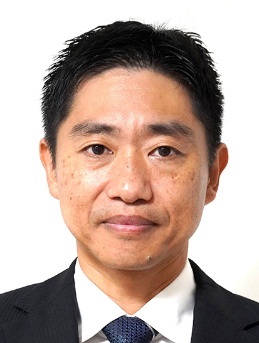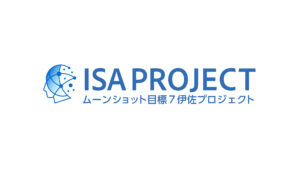Tatsuya Umeda

氏名Name
Tatsuya Umeda
所属・職名Affiliation, Title, etc.
Department of Integrated Neuroanatomy and Neuroimaging
Kyoto University Graduate School of Medicine
Associate Professor
研究室HPWebsite
一言メッセージShort Message
本プロジェクトでの研究概要Outline of the research in this project
Development of a Dementia Model Primate and Evaluation of Therapeutic Drugs
While treatments for Alzheimer's disease have advanced, translating therapies from rodent models to humans remains challenging. To overcome this limitation, there is a growing need for non-human primate models that accurately replicate human disease pathology. However, non-human primates do not naturally develop dementia. To address this, I aim to develop a dementia model primate by using a viral vector to express mutant tau in the entorhinal cortex of marmosets. I will monitor tau pathology and neuronal degeneration through MRI and histopathological analyses, conduct behavioral experiments, and further accelerate disease onset by administering amyloid-β oligomers. My ultimate goal is to establish the world's first non-human primate model of dementia.
Development of a Stroke Model Primate and Promotion of Functional Recovery via Electrical Stimulation
Damage to the somatosensory cortex and thalamus due to stroke can lead to sensory ataxia, yet effective treatments remain limited. To address this, I am developing a stroke model in marmosets by inducing infarction in the primary somatosensory cortex. To promote sensory-motor recovery, I apply electrical stimulation to adjacent brain regions that have survived the damage. Furthermore, I utilize electrophysiological and anatomical techniques to elucidate the neural mechanisms underlying functional recovery.
これまで主な研究内容Outline of main research so far
I have been studying the neural mechanisms underlying hand movement and somatosensory processing using neural activity recording techniques in animal models. In rats with brain injuries, I discovered the formation of novel circuits between the cerebral cortex and ipsilateral spinal cord. Additionally, I developed an innovative method to simultaneously record neural activity from multiple regions, including the motor and somatosensory cortices, sensory afferents, and muscles in macaques during hand movements. Through machine learning analysis, I demonstrated the tight functional coupling between motor and somatosensory systems.
Furthermore, I have developed multi-channel neural recording and ultra-high-resolution fMRI techniques in marmosets to further investigate somatosensory mechanisms. Using a stroke model, I identified neural circuit reorganization associated with functional recovery. Additionally, in a Parkinson’s disease model exhibiting REM sleep behavior disorder, I recorded whole-cortical electrocorticogram and uncovered changes in brain activity during sleep.

主な経歴・受賞歴等Career, Awards, etc.
- 2002-2004
- Research Fellow (DC2), Japan Society for the Promotion of Science (JSPS)
- 2004
- Completed Ph.D. program in Medical Science, Graduate School of Medical and Dental Sciences, Tokyo Medical and Dental University
- 2004-2007
- Researcher, Department of Cell Biology, Graduate School of Medical and Dental Sciences, Tokyo Medical and Dental University
- 2007-2013
- Researcher, Division of Behavioral Development, National Institute for Physiological Sciences, National Institutes of Natural Sciences
- 2013-2014
- Assistant Professor, Department of Neuroanatomy, Yokohama City University School of Medicine
- 2014-2020
- Section Chief, Department of Neuroscience, National Institute of Neuroscience, National Center of Neurology and Psychiatry
- 2020-
- Associate Professor, Department of Integrated Neuroanatomy and Neuroimaging, Graduate School of Medicine, Kyoto University
主要業績Major Publications
Umeda, T.*, Yokoyama O., Suzuki M., Kaneshige M., Isa T., Nishimura, Y.*(2024) Future spinal reflex is embedded in primary motor cortex output. Science Advances 10: adq4194, 10.1126/sciadv.adq4194
Kosugi, A., Saga, Y., Kudo, M., Koizumi, M., Umeda, T., Seki, K. (2023) Time course of recovery of different motor functions following a reproducible cortical infarction in non-human primates Frontiers in Neurology 14: 10.3389/fneur.2023.10947, 10.3389/fneur.2023.1094774
Umeda, T.*, Isa T., Nishimura, Y.* (2022) Temporal dynamics of the sensorimotor convergence underlying voluntary limb movement Proceedings of the National Academy of Sciences 119: e2208353119, 10.1073/pnas.2208353119
Umeda, T.*, Isa T., Nishimura, Y. (2019) The somatosensory cortex receives information about motor output” Science Advances 5: eaaw5388, 10.1126/sciadv.aaw5388
Umeda, T.*, Kozumi, M., Katakai, Y., Saito, R., Seki K. (2019) Decoding of muscle activity from the sensorimotor cortex in freely behaving monkeys NeuroImage 197: 512-526, 10.1016/j.neuroimage.2019.04.045
Umeda, T.*, Watanabe, H., Sato, MA., Kawato M., Isa T., Nishimura, Y. (2014) Decoding of the spike timing of primary afferents during voluntary arm movements in monkeys Front. Neurosci. 8: e97, 10.3389/fnins.2014.00097
Wanakhachornkrai, O., Umeda, T.*, Isa, K., Tantisira, M.H., Tantisira, B., Isa, T. (2014) Reorganization of sensory pathways after neonatal hemidecortication in rats.” Neurosci. Res. 79: 94-98, 10.1016/j.neures.2013.11.003
Umeda, T.*, Seki, K., Sato, MA., Nishimura, Y., Kawato M., Isa T. (2012) Population coding of forelimb joint kinematics by peripheral afferents in monkeys PLoS One. 7: e47749, 10.1371/journal.pone.0047749
Umeda, T.*, Isa, T. (2011) Differential contributions of rostral and caudal frontal forelimb areas to compensatory process after neonatal hemidecortication in rats” Eur. J. Neurosci. 34: 1453-1460, 10.1111/j.1460-9568.2011.07866.x
Umeda, T.*, Takahashi, M., Isa, K., Isa, T. (2010) Formation of Descending Pathways Mediating Cortical Command to Forelimb Motoneurons in Neonatally Hemidecorticated Rats J. Neurophysiol. 104: 1707-1716, 10.1152/jn.00968.2009



